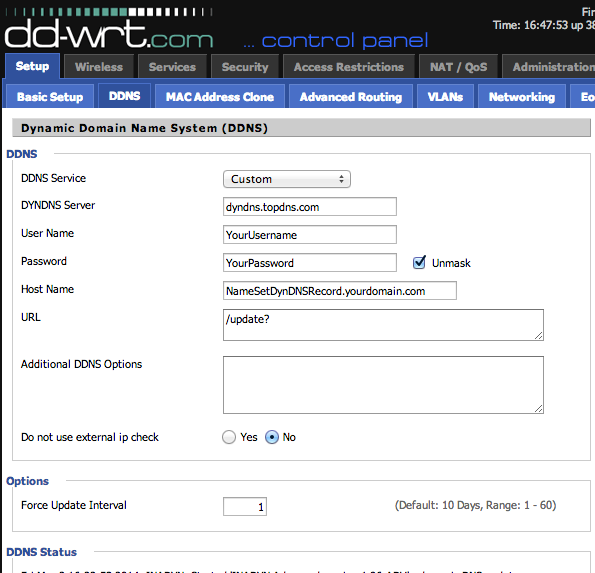IP address classes
IP addresses can be broken down into classes. These classes are A, B, C, D, E and their possible ranges can be seen below.
| Class |
Start address |
Finish address |
| A |
0.0.0.0 |
126.255.255.255 |
| B |
128.0.0.0 |
191.255.255.255 |
| C |
192.0.0.0 |
223.255.255.255 |
| D |
224.0.0.0 |
239.255.255.255 |
| E |
240.0.0.0 |
255.255.255.255 |
If you look at the table you may notice something strange. The range of IP address from Class A to Class B skips the 127.0.0.0-127.255.255.255 range. That is because this range is reserved for the special addresses called Loopback addresses that have already been discussed above.
The rest of classes are allocated to companies and organizations based upon the amount of IP addresses that they may need. Listed below are descriptions of the IP classes and the organizations that will typically receive that type of allocation.
Default Network: The special network 0.0.0.0 is generally used for routing.
Class A: From the table above you see that there are 126 class A networks. These networks consist of 16,777,214 possible IP addresses that can be assigned to devices and computers. This type of allocation is generally given to very large networks such as multi-national companies.
Loopback: This is the special 127.0.0.0 network that is reserved as a loopback to your own computer. These addresses are used for testing and debugging of your programs or hardware.
Class B: This class consists of 16,384 individual networks, each allocation consisting of 65,534 possible IP addresses. These blocks are generally allocated to Internet Service Providers and large networks, like a college or major hospital.
Class C: There is a total of 2,097,152 Class C networks available, with each network consisting of 255 individual IP addresses. This type of class is generally given to small to mid-sized companies.
Class D: The IP addresses in this class are reserved for a service called Multicast.
Class E: The IP addresses in this class are reserved for experimental use.
Broadcast: This is the special network of 255.255.255.255, and is used for broadcasting messages to the entire network that your computer resides on.
Private Addresses
There are also blocks of IP addresses that are set aside for internal private use for computers not directly connected to the Internet. These IP addresses are not supposed to be routed through the Internet, and most service providers will block the attempt to do so. These IP addresses are used for internal use by company or home networks that need to use TCP/IP but do not want to be directly visible on the Internet. These IP ranges are:
|
Class
|
Private Start Address
|
Private End Address
|
|
A
|
10.0.0.0
|
10.255.255.255
|
|
B
|
172.16.0.0
|
172.31.255.255
|
|
C
|
192.168.0.0
|
192.168.255.255
|
If you are on a home/office private network and want to use TCP/IP, you should assign your computers/devices IP addresses from one of these three ranges. That way your router/firewall would be the only device with a true IP address which makes your network more secure.
Full source (and loads of thanks): http://www.bleepingcomputer.com/tutorials/ip-addresses-explained/
… some extra summary table from here:
| Class |
1st Octet Decimal Range |
1st Octet High Order Bits |
Network/Host ID (N=Network, H=Host) |
Default Subnet Mask |
Number of Networks |
Hosts per Network (Usable Addresses) |
| A |
1 – 126* |
0 |
N.H.H.H |
255.0.0.0 |
126 (27 – 2) |
16,777,214 (224 – 2) |
| B |
128 – 191 |
10 |
N.N.H.H |
255.255.0.0 |
16,382 (214 – 2) |
65,534 (216 – 2) |
| C |
192 – 223 |
110 |
N.N.N.H |
255.255.255.0 |
2,097,150 (221– 2) |
254 (28 – 2) |
| D |
224 – 239 |
1110 |
Reserved for Multicasting |
| E |
240 – 254 |
1111 |
Experimental; used for research |
Note: Class A addresses 127.0.0.0 to 127.255.255.255 cannot be used and is reserved for loopback and diagnostic functions.
Private IP Addresses
| Class |
Private Networks |
Subnet Mask |
Address Range |
| A |
10.0.0.0 |
255.0.0.0 |
10.0.0.0 – 10.255.255.255 |
| B |
172.16.0.0 – 172.31.0.0 |
255.240.0.0 |
172.16.0.0 – 172.31.255.255 |
| C |
192.168.0.0 |
255.255.0.0 |
192.168.0.0 – 192.168.255.255 |
